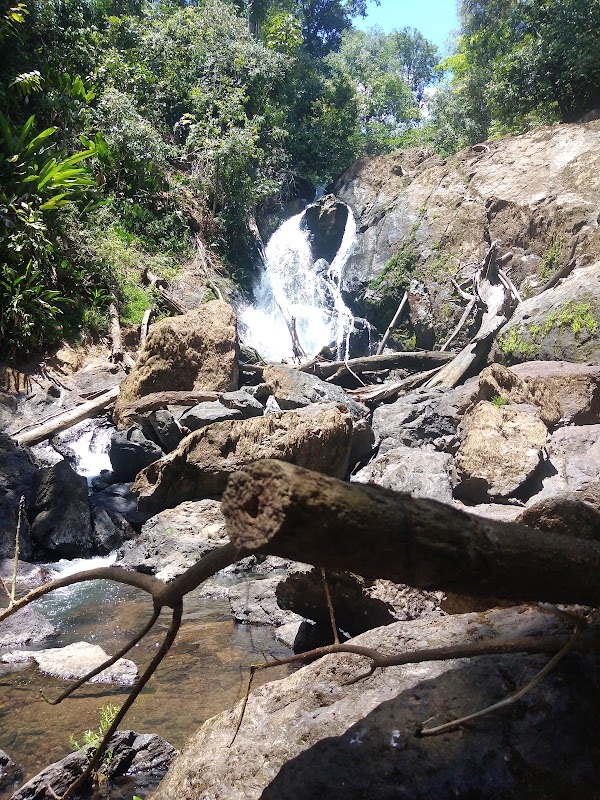Top Scenic Hiking and Wildlife Watching Trails Near Corcovado National Park: Exploring the Osa Peninsula's Forest Depths
Explore the Osa Peninsula's wild heart through the top hiking trails near Corcovado National Park. From moderate loops to demanding ridge routes, these paths offer up-close wildlife encounters and vivid forest landscapes, equipped with practical tips for every adventurer.
Start Early to Avoid Afternoon Rain
Morning hikes take advantage of drier conditions and increased wildlife activity, reducing the risk of wet and slippery trails common in the afternoons.
Wear Sturdy Waterproof Footwear
The terrain features roots, mud, and stream crossings. Boots with grip and water resistance will protect your feet and provide stability.
Bring Plenty of Water and Insect Repellent
Humidity is high, and staying hydrated is crucial. Effective insect repellent will guard against mosquitoes, especially near water crossings and dawn/dusk hours.
Use a Local Guide for Safety and Insight
Guides enhance wildlife spotting opportunities and navigate tricky trail segments while sharing cultural and ecological knowledge.
Top Scenic Hiking and Wildlife Watching Trails Near Corcovado National Park: Exploring the Osa Peninsula's Forest Depths
Corcovado National Park is an untamed force on Costa Rica’s Osa Peninsula, where dense rainforest paths challenge hikers with nature that refuses to yield. The trails here are not just routes but channels into the heart of one of the world's most biologically intense places. For those ready to engage with terrain that pushes and beckons, these trails offer striking views, up-close wildlife encounters, and the raw pulse of the jungle.
Start with the Sirena Station Trail, a 12 km round-trip trek with moderate elevation gains that cuts through lowland forest. The ground alternates between firm soil and tangled roots, asking for steady footing. The forest canopy filters sunlight in shifting patterns, while troop calls and toucan calls thread the air. Early morning is prime for spotting tapirs and scarlet macaws that make this corridor their regular thoroughfare.
For a more extended challenge, the San Pedrillo Trail stretches nearly 18 km one way, demanding stamina with sections that rise and descend sharply along ridges and river valleys. At times, the Sorprendente River dares hikers to choose carefully placed crossing stones, its currents pushing forward with a steady insistence. This path rewards with ocean glimpses and rare sightings of jaguars and anteaters, animals fierce in their elusive ways.
If wildlife watching implies patience, the Los Patos Trail offers a practical alternative. Shorter at 4 km, it has gentler slopes but invites visitors into vibrant bird habitats. The trail forms a loop, making navigation straightforward. The forest here hums alive with cicadas, while wary monkeys appear in the treetops like cautious elders, overseeing the undergrowth.
Preparation is key. Hydration packs should be full—humidity pulls moisture fast. Waterproof, sturdy boots that grip uneven earth stand as silent allies. Timing your hike for mornings reduces encounters with afternoon rains common in this region. A reliable insect repellent lends lasting defense.
Each step of the way, you confront a landscape fiercely itself: rivers buzzing with life, undergrowth pushing against your path, skies briefly revealing themselves before dipping back beneath leaves. These are trails shaped by wildness, where every sighting is earned, every view a chance to reflect on the power of nature uninterrupted.
This is hiking and wildlife watching stripped to essentials—an interaction with the forest’s relentless heartbeat, where careful preparation meets thrilling unpredictability. It’s a tangible way to experience the Osa Peninsula’s depths, carrying both respect and readiness into the forest’s embrace.
Nearby Trips
All Adventures
Boat Charters
Water Activities
Adventures near Puerto Jiménez
Discover the unique and memorable adventures that make Puerto Jiménez special.
Frequently Asked Questions
Are permits required to hike in Corcovado National Park?
Yes, all visitors need a permit to enter Corcovado National Park, which can be obtained through the park’s official administration. Securing a local guide is often mandatory for safety and conservation.
What wildlife species are most commonly seen on these trails?
Hikers frequently spot scarlet macaws, white-faced capuchins, peccaries, and in rare cases, tapirs and jaguars—though the latter are elusive and primarily nocturnal.
Is it safe to hike the trails alone?
Solo hiking is not recommended due to challenging terrain, wildlife presence, and remote conditions. Hiring a local guide is safer and enriches the experience.
Which trail is best for beginners interested in wildlife watching?
The Los Patos Trail is accessible with gentle slopes and good chances to see a variety of bird species, making it ideal for those newer to rain forest hikes.
What time of day is best for photography?
Early morning hours offer soft, diffused light and active wildlife, while late afternoon provides warm tones and chances to capture sunsets along ridge viewpoints.
Are there facilities or rest stops along the trails?
Corcovado’s trails are primitive; only Sirena Station and San Pedrillo have ranger stations with basic amenities. Carry all essentials needed for your hike.
Recommended Gear
Hiking Boots
Waterproof boots with good ankle support help manage wet, root-covered, and uneven ground.
Hydration Pack
Carrying at least 2 liters of water can prevent dehydration under humid conditions.
Insect Repellent
Keeps mosquitoes and other insects at bay, essential near water and in humid forest zones.
Light Rain Jacket
A breathable waterproof jacket protects from the frequent rains without overheating.
Local Insights
Hidden Gems
- "The viewpoint at Cerro Maté offers panoramic forest-to-ocean views rarely visited by casual hikers."
- "A small waterfall pool along the Sirena Trail provides a refreshing break after steady uphill sections."
Wildlife
- "Ocelots are secretive but present in lower elevations near water sources."
- "The Osa Peninsula hosts over 400 bird species, including the elusive Great Green Macaw."
History
"The park protects lands historically used by indigenous peoples and later explored for gold, whose trails often overlap modern hiking routes."

